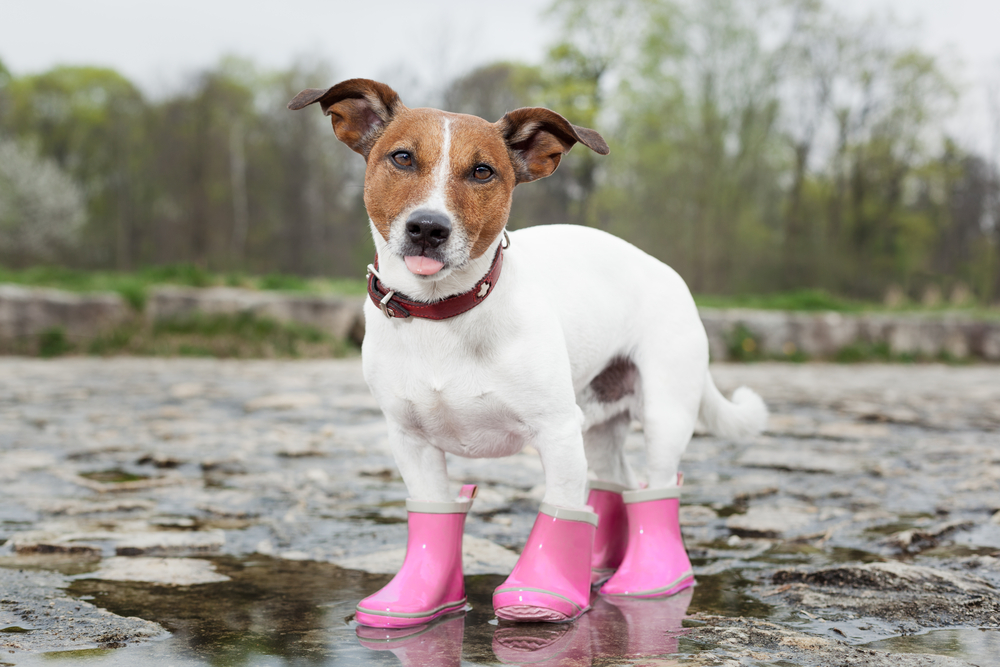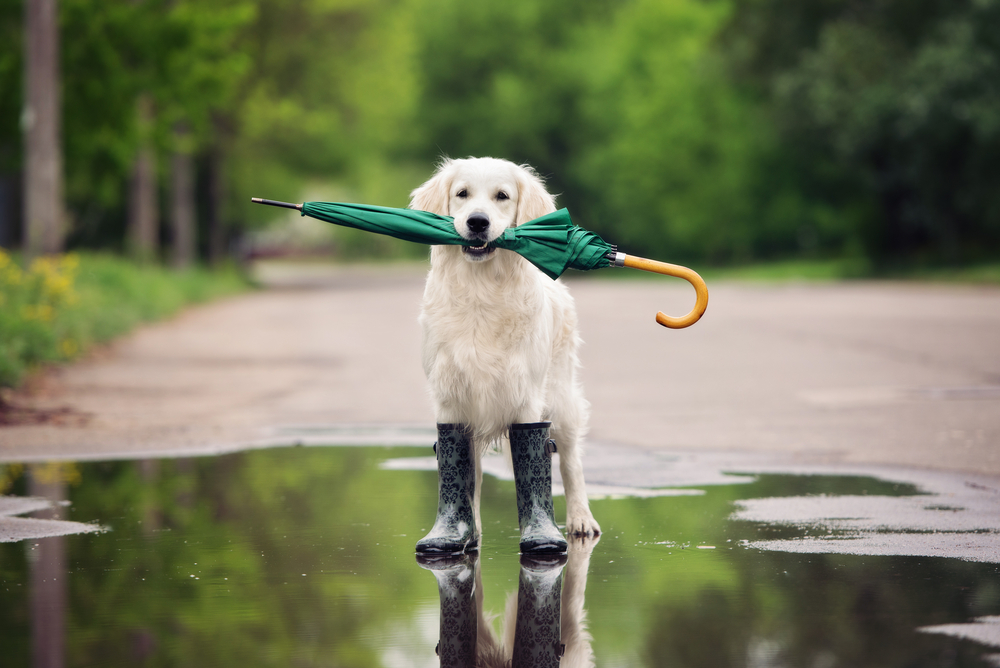Ice, snow, hot asphalt, rocky hiking trails — the pads on your dog’s feet sure take a beating. And although nature designed them to be tough, they aren’t bulletproof. Cuts, tears, and abrasions, along with dry and cracked paw pads, are common dog paw problems that can lead to costly veterinary care on top of your pet’s pain and suffering.
Fortunately, thanks to today’s pet-accessory manufacturers, you can protect your dog’s paws from the elements and rugged outdoor adventures with dog boots made for his specific needs. If your dog’s paws need a little extra protection, try this handy guide to make sure the boots you purchase for him fit perfectly.

Why can’t dogs walk in shoes?
Anyone who’s witnessed a dog’s first attempts at walking in boots has probably had a good chuckle or two. It’s not that a dog can’t walk in shoes — they can –it’s simply that they are accustomed to feeling the ground through the pads of their paws. Wearing boots, especially for the first few times, often makes a dog feel as though something is stuck on their paw. The comical, exaggerated gait they display at first is their instinctual way of trying to shake it off.
Here’s the good news: most dogs will acclimate to their new gear quickly, so don’t let your dog’s bewildered reaction keep you from buying protection for his paws.
Determine why your dog needs boots
As you might imagine, there are a variety of styles to choose from. The perfect style for your pet is directly related to why you need them. Are you an avid hiker who likes to take his pup along on rocky, cactus-lined trails? Or do you and your pup like to play in the snow instead? Perhaps you simply enjoy a daily walk around the neighborhood in a climate that’s extremely hot or wet?
Regardless, search for boots made from waterproof material with a textured grip, adjustable hook-and-loop closures, and a flexible sole so your dog can walk naturally. Then, you can opt for fashionable, functional, or budget-friendly styles, depending on the features you want.
How to keep dog boots from falling off
A well-fitting boot is much less likely to fall off, and the best way to find the right fit is to take your dog to the local pet store to try on a few styles. If that isn’t an option for you, try ordering online. Make sure you measure your dog’s paws carefully and place your order according to the manufacturer’s size guide.
- Measure the circumference at the widest part of your dog’s paw with a fabric tape measure. This measurement indicates the width of your dog’s paw.
- Measure the length of your dog’s paw, starting at the tip of his toes to where you want the top of the boot to rest on your dog’s leg. A bit of advice: Although knee boots are fashionable, boots that cover your dog’s dewclaw can cause inflammation, which may cause limping, bleeding, swelling or excessive licking.
Always follow the manufacturer’s measurement guidelines when ordering and, when in doubt, order the next largest size. Dog boots that are too small can cause blisters and impede circulation. And be patient. Like human feet, not all dog paws are the same size and shape. If you don’t find a good fit the first time around, keep looking. With a large number of dog boots available on the market today, you’re sure to find a set that fits your dog perfectly.

Before you head out the door
Dogs aren’t accustomed to wearing apparel on their feet, so you’ll want to take some time to get them used to the feeling before you head out the door.
- If possible, have your dog stand while you put the boots on. To make it easy, start with the front paws. Lay both boots on the ground close to you so you can reach them easily. Then, facing forward, straddle your dog, lift one paw, and gently put it into the nearest boot. Place your dog’s paw firmly on the floor so you can get the best fit before you adjust the strap firmly (but not too tightly). Repeat the process on the other front paw, then let your dog walk around for a few minutes.
- When he’s comfortable, place the remaining booties near his back paws and straddle him facing backward. Gently place one paw into a boot as you did before, making sure he is standing flat on the floor before you tighten the strap.
- If your dog is small, you might want to place him on a table or countertop instead.
- Let him walk around inside for a few minutes; engage him in play with his favorite toy. Tip: Get the camera ready. Those first few steps will probably be laugh-out-loud funny.
- Start with a short walk around the neighborhood before you set out on a long trek. This will give him time to get used to the feel of the boots on his feet as you monitor the way they fit.
Dog boots are a great way to protect your dog’s paws from snow and ice, harsh terrain, and the chemicals used to treat roads and sidewalks throughout the year. Remember, your dog sweats through glands on his paws, so limit the amount of time he wears them in hot weather. And look for signs of rubbing or blisters that might indicate an adjustment is necessary after each use.
Marilyn Monroe once said, “Give a girl the right shoes, and she can conquer the world.” We’re not promising world domination, but we’re fairly confident the right boot will help make your little corner a lot more fun to play in for all concerned.


